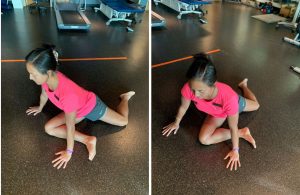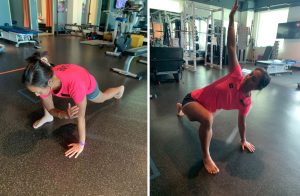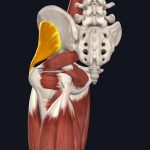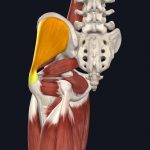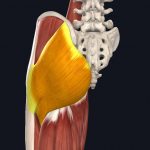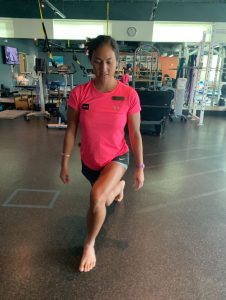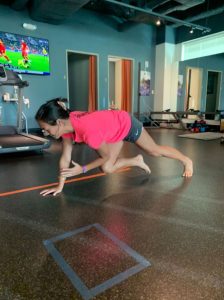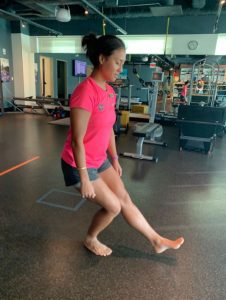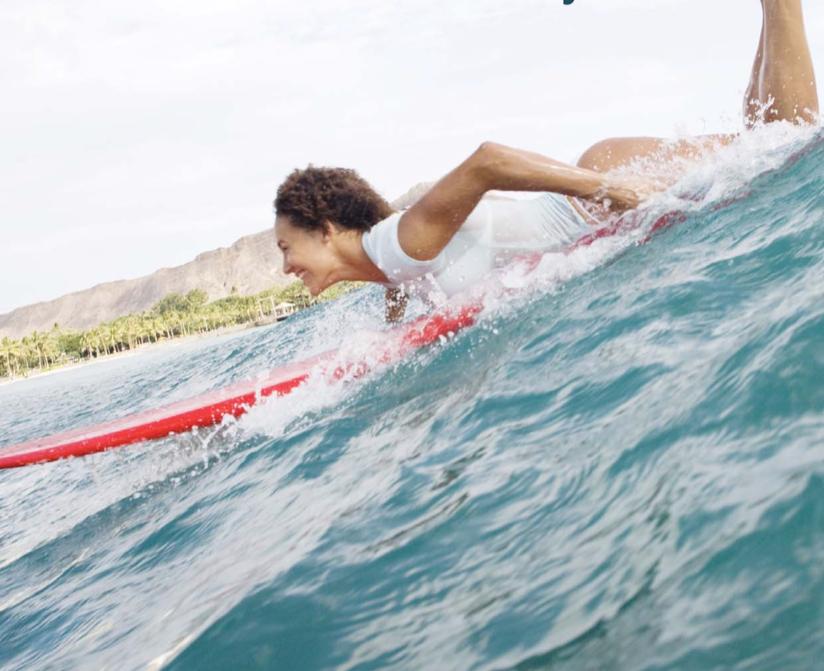
Do you ever experience knee pain during or after surfing? Are there times that you feel your knee in an awkward position while surfing?
At any level, surfing can pose an injury risk. It’s a taxing activity for the whole body, and anything can happen when you paddle out. However, you shouldn’t have to worry about knee pain while riding the wave and cutting up down through a barrel.
Knee pain while surfing is common, but it could be a sign that strength and mobility issues are limiting your performance. Poor body mechanics in our trunk, hips, and/or ankles could place undue stress on the knee, so it’s important to look beyond the knee pain to find the root cause.
If you’ve been experiencing consistent knee pain while surfing, be sure to contact us at JACO Rehab to get it checked out.
Do you ever experience knee pain during or after surfing? Are there times that you feel your knee in an awkward position while surfing?
At any level, surfing can pose an injury risk. It’s a taxing activity for the whole body, and anything can happen when you paddle out. However, you shouldn’t have to worry about knee pain while riding the wave and cutting up down through a barrel.
Knee pain while surfing is common, but it could be a sign that strength and mobility issues are limiting your performance. Poor body mechanics in our trunk, hips, and/or ankles could place undue stress on the knee, so it’s important to look beyond the knee pain to find the root cause.
If you’ve been experiencing consistent knee pain while surfing, be sure to contact us at JACO Rehab to get it checked out.
What is Surfer’s Knee?
Sometimes, surfers have to position their bodies in unnatural, awkward positions. If the body isn’t prepared to handle these positions, “surfer’s knee” might develop.
Surfer’s knee refers to knee pain in the medial aspect of the knee, or the inner area, during or after surfing. If allowed to worsen, it often leads to an MCL sprain or a meniscal injury.
Before All Else, Understand Your Limitations
It is important to understand your body’s limitations as you prepare to paddle out. Understanding your body can help you warm up properly, understand which waves you’re ready to charge, and prevent placing yourself in harmful situations.
When you are out on the water and an epic wave is upon you, you’re thinking,
“How to make the ride worth it!?”
And definitely not,
“How do I move my hip and place my foot to protect my knee in this particular situation?”
Proper form and body mechanics as we paddle, pop up, and ride the waves are not at the forefront of our minds. Proper body mechanics should be habitual, but those habits are often developed out of the water with specific mobility and strengthening exercises that target your specific deficits.
If you are thinking about going surfing for the first time, or maybe you haven’t been out in a while, then you should take steps to prepare your body for what’s to come.
On the other hand, if you are a regular or competitive surfer, knowing and addressing your weak spots can help you prevent injury.
Surfing Positions and Knee Vulnerability
Your specific position preference can influence which side of your body is most vulnerable to surfer’s knee pain.
Example: Depending on which preference you have in terms of riding goofy foot (right foot forward) or regular foot (left foot forward) will determine which knee may be affected.
Despite your footing preference, surfing requires a great amount of strength and mobility in the whole body to maintain as much control as possible. Where one joint lacks mobility, another joint may need to compensate, sometimes quite unnaturally.
The most common deficits seen in surfing are related to trunk and hip mobility, strength, and coordination. If the hip and trunk are not working together, then the knee will be positioned out of alignment and lead to injury. Let’s check out some ways to address the trunk and hip with exercise!
Prevent Surfer’s Knee: 5 Exercises Addressing the Trunk and Hip
We may not realize how much our hip and trunk play into surfing mechanics. If either the hip or the trunk (or both) are not coordinating movement correctly, then the knee will take on unwanted forces. Strength and mobility issues in the trunk and hip can lead to knee pain and possible injury.
Hip & Trunk Mobility
The hip and spine (or trunk) have a major influence on a surfer’s knee function and performance. If the hip or the spine lack mobility, the demand is placed on a neighboring joint instead, like the knee.
Hip and trunk rotation mobility is particularly important because the knee simply cannot handle twisting forces in the same manner as the trunk and hip. The knee bends and straightens, but barely rotates in comparison to the hip or spine. If the hip cannot rotate or control twisting motions, that twisting force goes to the knee… and knee torque is the last thing you want to feel when carving a wave.
Surfers also need adequate hip and trunk mobility when popping up, going down the line, and cutting back and forth to change directions on the wave.
Further up the chain, the trunk needs to be flexible into extension to work well with the hip, specifically during the pop up. Once you’re riding a wave, the trunk needs to have enough rotation to coordinate with the hip as you steer the board.
Here are two awesome exercises to incorporate into a workout or warm-up. These specifically target hip and trunk mobility to get you moving better on in the water!
Hip 90/90 Stretch
1. Find space on the floor to sit
2. Place one leg in front at a 90 degree position, externally rotated
3. Send the other leg behind at a 90 degree position, internally rotated
4. Hold for 30 seconds then switch sides. You can also make this more dynamic by switching more often with less holds.
World’s Greatest Stretch
1. Find space on the floor and get into a tall plank position
2. Bring your right foot next to your right hand.
3. Reach the right hand up to the sky, rotating your torso away from the floor. Hold 10 seconds.
4. Return hand to floor. Repeat x5-10.
5. Return to tall plank. Repeat on left side.
While it’s important to maintain adequate mobility in our hips and trunk, we also need to maintain adequate stability at our glutes and core to control knee position and distribute force. That’s where strengthening comes in.
Trunk and Hip Strength
Just as hip and trunk mobility play a role in preventing knee pain, so does hip and trunk strength. By targeting core and glutes, you improve the stability of your joints and better distribute force through the body. Let’s dive a little deeper as to why.
The glutes are a major stabilizer of the hip joint. They also have the most control in maintaining proper alignment of the leg.
- Gluteus Minimus | Images courtesy of Complete Anatomy
- Gluteus Medius | Images courtesy of Complete Anatomy
- Gluteus Maximus | Images courtesy of Complete Anatomy
If our glutes are not working to their full potential, it may cause the knee to collapse medially or inward. Inward collapse places a lot of force on the inner aspect of the knee, especially during activity. Too much force can place you at risk for medial collateral ligament injury (MCL) or meniscal injury.
Trunk control and core endurance is also necessary to maintain stability of our legs. The core often works closely with our glutes to maintain proper alignment and transfer force through our body.
When we refer to the core here, we are not only talking about the “6 pack” abs. Deep core muscles, like the transverse abdominis and multifidi, are often more important in maintaining trunk stability during sport.
The ocean is powerful – you can feel that on your board. By utilizing the glutes and core to your advantage, you can help distribute the wave’s force away from your joints and use that energy to ride instead!
Here are 3 exercises to start performing that improve rotational control at the trunk and hips. If performed correctly and consistently, they can help prevent knee injury on the water.
Crossover Lunge
1. Start in standing.
2. Stride backwards adopting a lunge position, but instead of going directly back, place your back foot diagonally as if you were doing a curtsey.
3. Perform x10-15 on each leg, ensuring that your knee stays pointing towards the second toe (and is not caving inward).
Plank Elbow-Knee Tap
1. Start on the floor in a tall plank.
2. Bring your right elbow and your left knee to center. Keep your balance and try to maintain a stable position, not rocking as you move.
3. Hold for 1-2 seconds and return to tall plank. Alternate sides x10-14 times. Go slower for a challenge with longer holds.
Single Leg Squat
1. Start in standing. You can use a chair as a target for your squat to enforce depth.
2. Balancing on one leg, hinge at your hip and bend your knee to squat as low as possible with control.
3. Ensure that your knee remains in-line, pointing over the 2nd toe and not caving inward.
4. Repeat x8-12 each side, stopping where your form starts to struggle.
Need Help? Reach Out to JACO Rehab!
Reach out to JACO Rehab for guidance! You can contact us for a 10 minute evaluation or schedule a full evaluation with a doctor referral. Don’t wait! Let’s get you back to surfing pain-free.
Written by Mara Mukai, DPT
